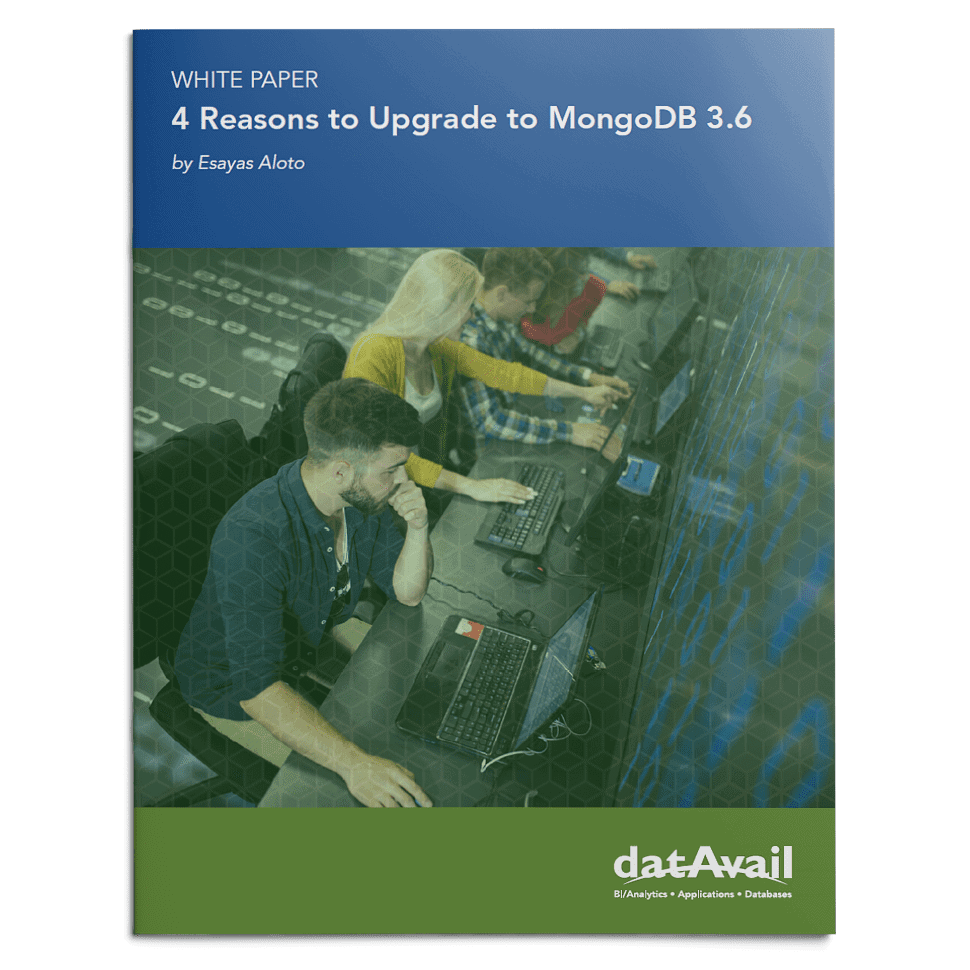Warning Signs That You Need to Upgrade Your MongoDB to the Latest Version
Author: Esayas Aloto | 5 min read | February 28, 2019
MongoDB 3.2 or 3.4 has been working great for your organization, or so you thought. When MongoDB 3.6 was announced, you may have put that information on the back burner. “Why bother fixing something that isn’t broken,” is a common train of thought in this situation. However, when you look at your database operations closely, you’ll discover that the warning signs indicating that it’s time to upgrade are staring right at you. And with version 4.0 now available, the time is now to start planning your upgrade.
You Experience a Data Breach
Cybercrime is an unfortunately common situation to deal with in the business world. Hackers come up with new types of attacks on a frequent basis, and they often look for low-hanging fruit as their target. Older software versions are a particularly enticing attack surface, as they don’t have access to security patches that could thwart the methods they’re using. If you experience a data breach, pay close attention to how the attacker accessed the information and whether that happened because the MongoDB version was older.
Production Servers are Underutilized
Rapid or inefficient scaling can lead to a production environment with a lot of underutilized capacity. An overly complex MongoDB environment can lead to issues with performance, development, and security. You could end up in a situation where you’re unable to meet the demands of your organization. An upgrade can help through performance enhancements, an audit of your existing production servers, and a consolidation of your resources.
High Alert Volume is a Common Occurrence
How many database alerts are you getting on a regular basis? A properly managed MongoDB database on the latest version should only give you a handful of alerts every week. Some organizations end up receiving hundreds per day. While many issues can lead to this type of volume, one of the biggest culprits is being on an older database version that doesn’t work as well for your requirements.
The Database Version Reached End of Life
The End of Life period for a database version is a good indicator that it’s time to move up to a different version. Your organization won’t have access to security patches or feature updates by remaining on an obsolete database version. While it’s a good idea to keep up with the latest version of MongoDB, at the very least you should avoid running databases on versions that are no longer actively supported by the developers.
The Database Operation Costs are Getting Out of Control
Your database expenses may go up naturally over time, as your organization grows and you have more infrastructure requirements. However, if the costs are getting out of control without a mitigating factor, then it may come from an older version of MongoDB.
You don’t get the same level of performance with older database versions, which can lead to adding more servers than you would with 3.6. You may also need to pay for more storage. A talent shortage could make it difficult to bring in MongoDB specialists that have hands-on experience with older versions of the software. The maintenance costs can also go up in this situation.
Ready to learn more about upgrading MongoDB to version 3.6, or even 4.0 which is now available? Download our white paper, 4 Reasons to Upgrade to MongoDB 3.6, and discover the benefits of migrating.
If you need help with the migration process or want to know more about getting the most from MongoDB, contact Datavail. We have MongoDB certified experts available for on-site or remote database administration services.

Read This Next
Upgrading MongoDB White Paper
Ready to learn more about upgrading MongoDB to version 3.6, or even 4.0 which is now available? Download our white paper, 4 Reasons to Upgrade to MongoDB 3.6, and discover the benefits of migrating.
